ImagiTable
Research
Digital Creativity 2019 [Go to Pulication URL]
📝 Part of Doctoral Thesis ‘Digitally Augmented Play’ [Go to Dissertation Page]
#Physical Computing #3D Prototyping #Interactive Play Design #Children #Quantitative & Qualitative User Research
![]()
In pretend play, children frequently recreate and repurpose everyday objects while expressing in-mind imagination as reality (e.g. a child pretends that a stick is a magic wand). By playing make-believe and using cognitions that mediate present objects and false-belief symbols, pretend play helps children learn how to express themselves, explore social interactions, and understand things and people within a real-world context.
The emergence of digital technology has enough capability to support children’s ability to practice these development benefits using interactive tools and systems for pretend play. However, further exploration is needed concerning how technology-mediated pretend play can elicit experiential differences and how technology should be designed to promote pretend play experiences.
This paper takes an interaction design approach to explore how children perceive augmented toys, assign symbolic meaning, and perform pretence socially in technology-mediated playing.
Research
Digital Creativity 2019 [Go to Pulication URL]
📝 Part of Doctoral Thesis ‘Digitally Augmented Play’ [Go to Dissertation Page]
#Physical Computing #3D Prototyping #Interactive Play Design #Children #Quantitative & Qualitative User Research
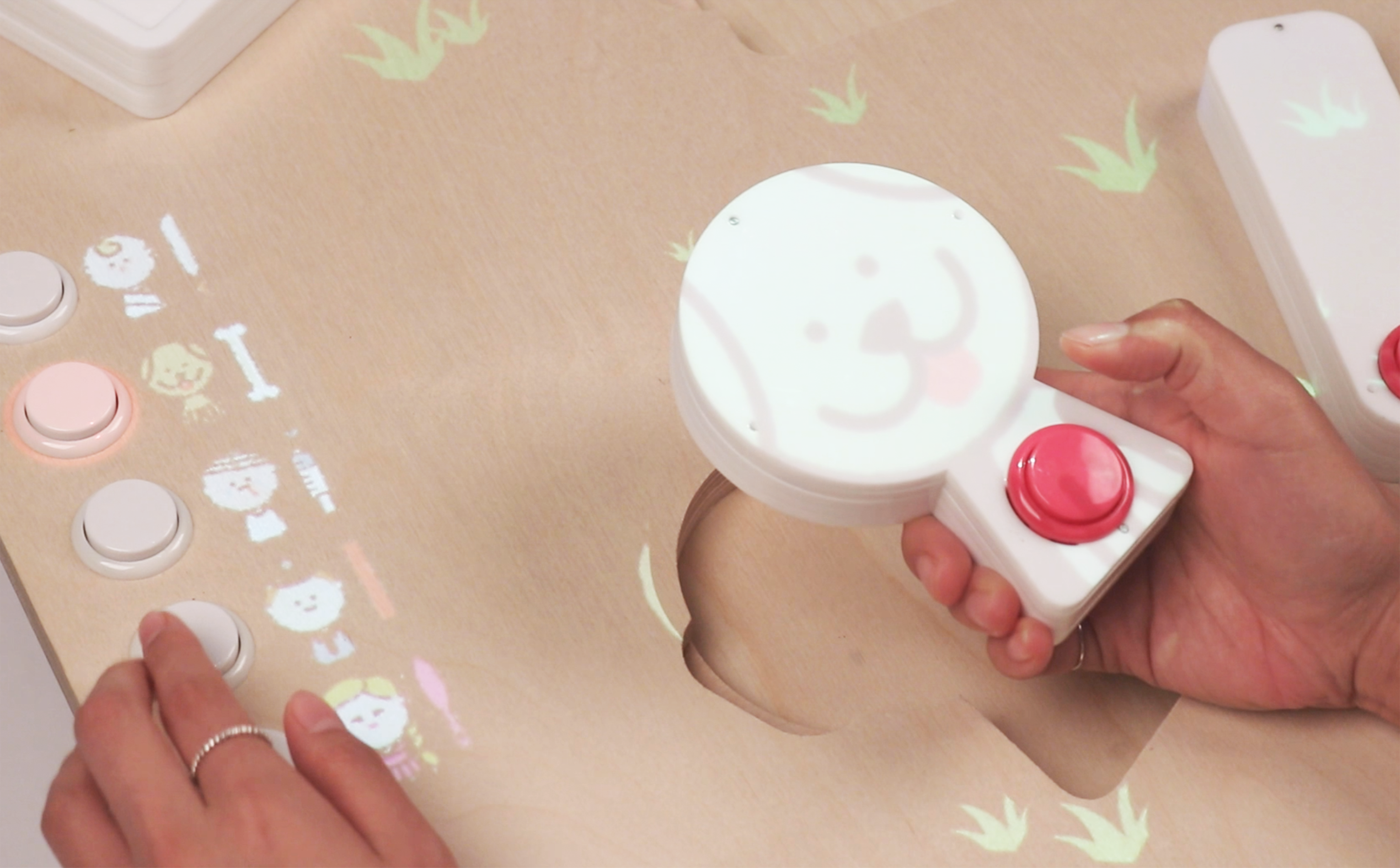
In pretend play, children frequently recreate and repurpose everyday objects while expressing in-mind imagination as reality (e.g. a child pretends that a stick is a magic wand). By playing make-believe and using cognitions that mediate present objects and false-belief symbols, pretend play helps children learn how to express themselves, explore social interactions, and understand things and people within a real-world context.
The emergence of digital technology has enough capability to support children’s ability to practice these development benefits using interactive tools and systems for pretend play. However, further exploration is needed concerning how technology-mediated pretend play can elicit experiential differences and how technology should be designed to promote pretend play experiences.
This paper takes an interaction design approach to explore how children perceive augmented toys, assign symbolic meaning, and perform pretence socially in technology-mediated playing.
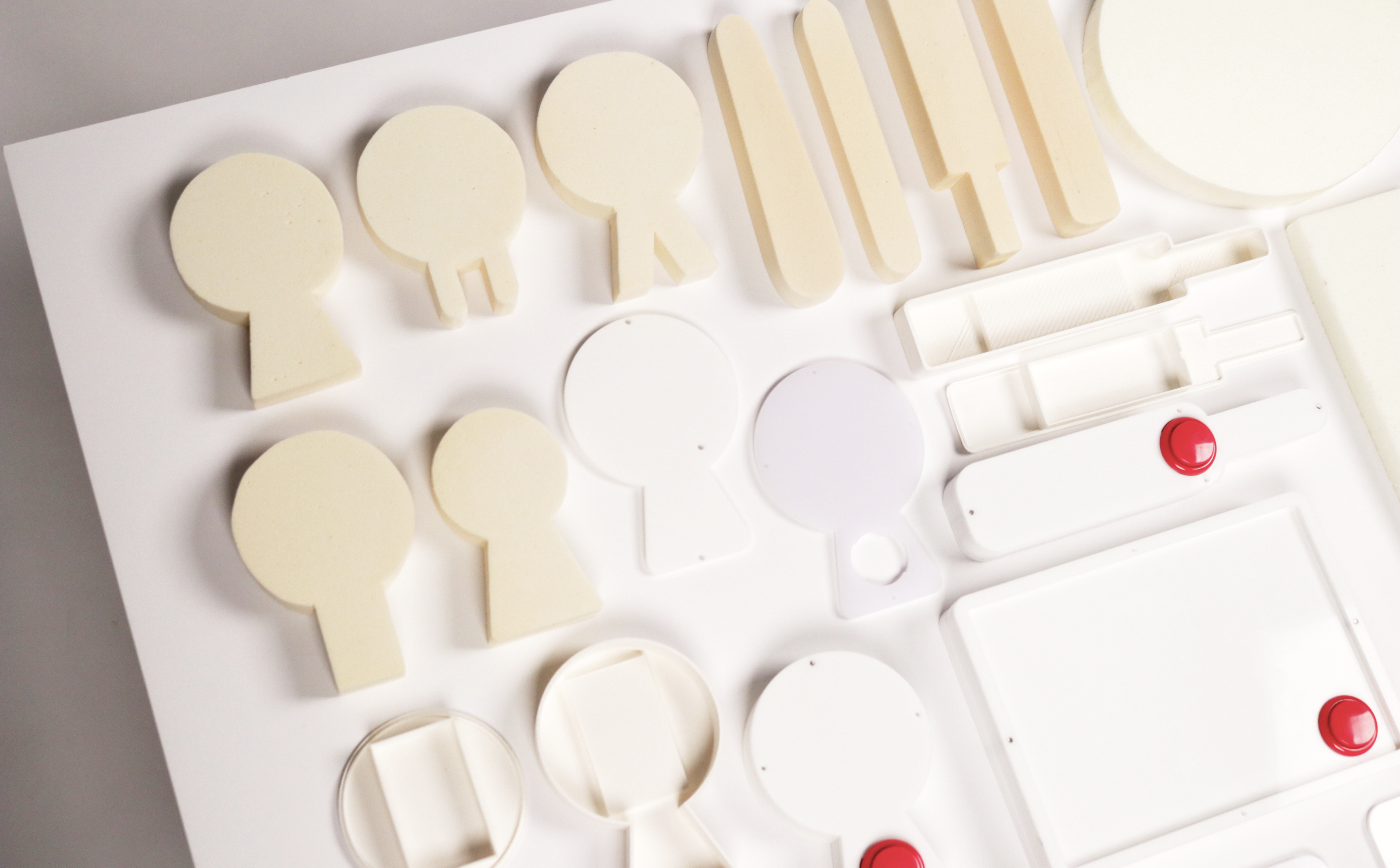
I defined objects that can be physically referenced for each classified pretence type as role toy, tool toy, and space toy.
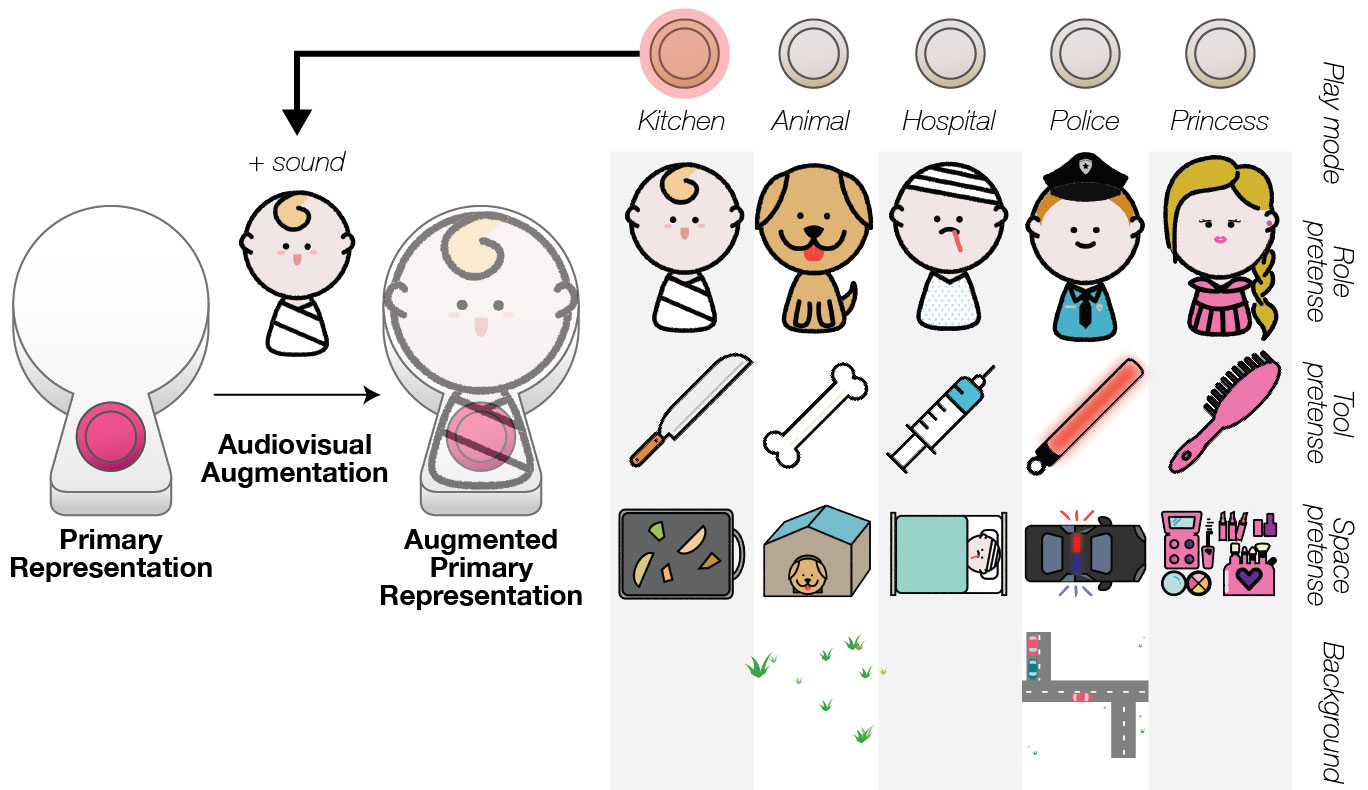
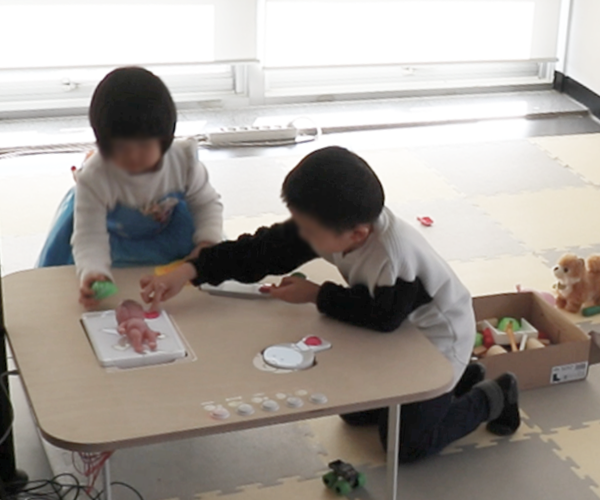



I developed a system with three kinds of toys—each with distinct abstract appearances and audiovisual augmentation—based on several design decisions.
![]()
The system allowed two types of trigger actions: first, the visual stimulus repeatedly appeared and disappeared as each toy was inserted into a cut-out engraved in the table. We designed no auditory stimulus for this action as we did not want to hinder play activity due to excessive usage; and, second, by pressing a button on the toys. When the button was pressed, the system projected an animated visual stimulus onto the corresponding cut-out position, and an associ- ated sound was played by the speaker.
![]()
The system involved three types of toys and a table providing audiovisual augmentation following the play modes.
A user study was conducted to investigate how digital augmentation affects children’s social pretend play.
I compared social pretend play behaviour in two different conditions:
Both quantitative (Mann-Whitney U tests) and qualitative (thematic analysis) results indicated that digital augmentation significantly influenced children’s pretend play in several symbolic and social categories.
![]()
![]()
![]()
![]()
This study provides a novel understanding of the integration of digital augmentation with tangible objects as an effective intervention to elicit cognition on imaginative thoughts of children and affect how children behave, which is complex to facilitate. The current findings contribute to the adaptation of emerging technology for children’s imaginative play, and they provide insight and motivation for the design of a collaborative interface with shared resources.
This study is especially beneficial for practitioners who wish to develop new kinds of toolkits and systems employing digital technology for entertainment and education, and for parents and educators who have questioned the impact of interactive toys on children’s creative and social development.
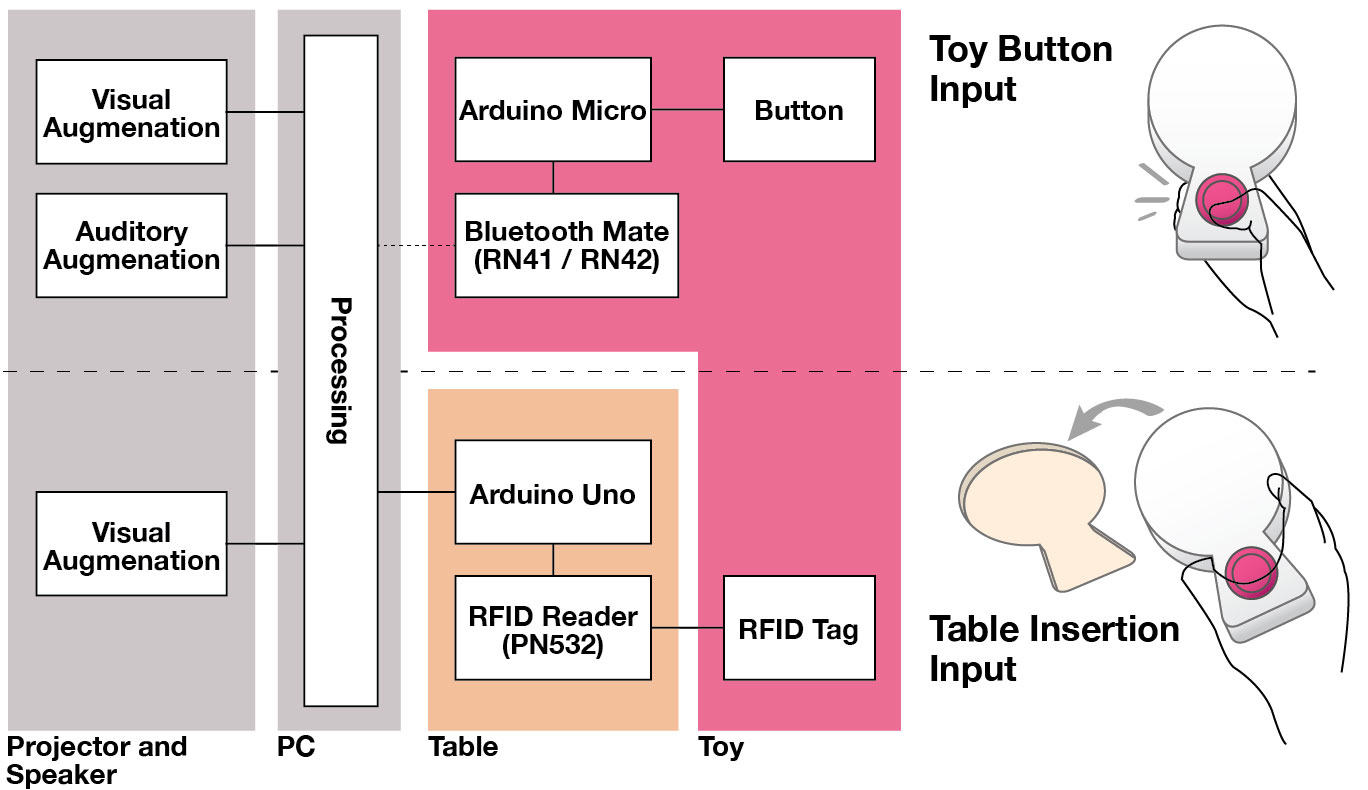
The system allowed two types of trigger actions: first, the visual stimulus repeatedly appeared and disappeared as each toy was inserted into a cut-out engraved in the table. We designed no auditory stimulus for this action as we did not want to hinder play activity due to excessive usage; and, second, by pressing a button on the toys. When the button was pressed, the system projected an animated visual stimulus onto the corresponding cut-out position, and an associ- ated sound was played by the speaker.
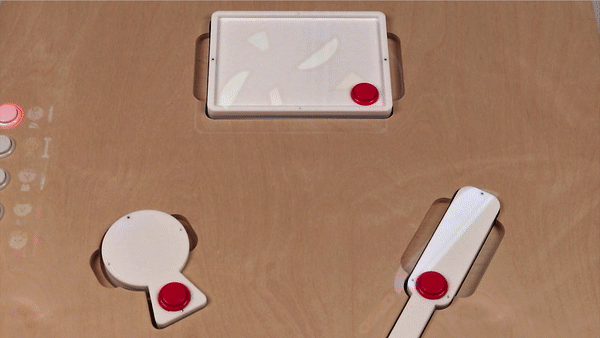
The system involved three types of toys and a table providing audiovisual augmentation following the play modes.
A user study was conducted to investigate how digital augmentation affects children’s social pretend play.
I compared social pretend play behaviour in two different conditions:
- Acondition in which the traditional toy and the developed toy were not digitally augmented
- A condition that included digital augmentation with the same physical toy stimuli.
Both quantitative (Mann-Whitney U tests) and qualitative (thematic analysis) results indicated that digital augmentation significantly influenced children’s pretend play in several symbolic and social categories.




This study provides a novel understanding of the integration of digital augmentation with tangible objects as an effective intervention to elicit cognition on imaginative thoughts of children and affect how children behave, which is complex to facilitate. The current findings contribute to the adaptation of emerging technology for children’s imaginative play, and they provide insight and motivation for the design of a collaborative interface with shared resources.
This study is especially beneficial for practitioners who wish to develop new kinds of toolkits and systems employing digital technology for entertainment and education, and for parents and educators who have questioned the impact of interactive toys on children’s creative and social development.